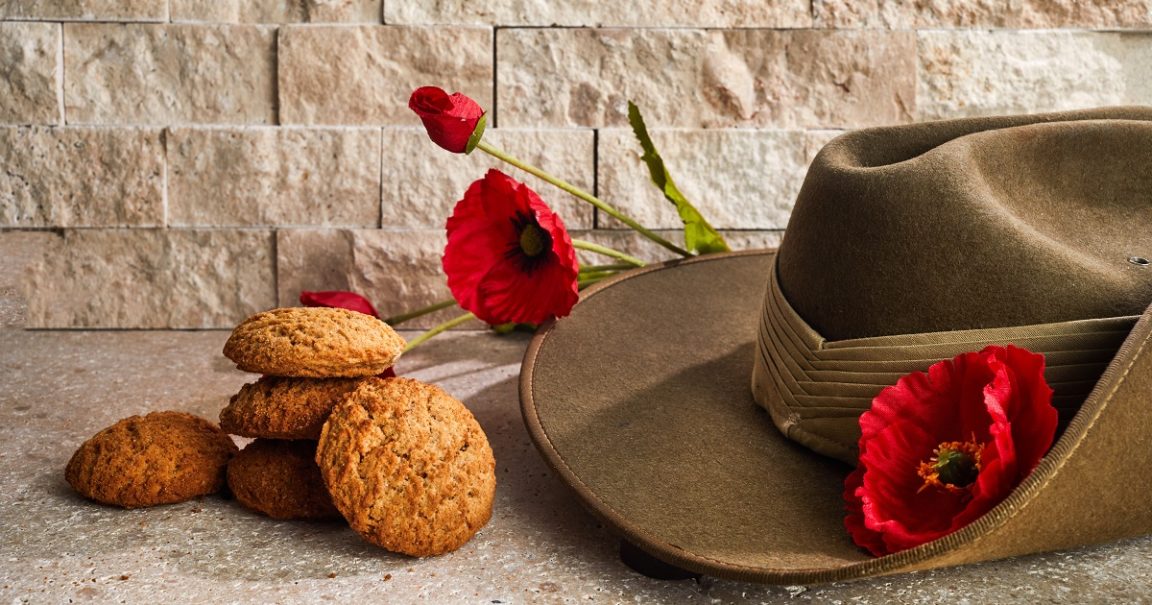Perfectly buttery, crunchy, and golden, Anzac biscuit is a staple to the Australian palate. Known to New Zealand as well, this biscuit is made from coconuts, golden syrup, butter, and oats, and is made to perfection with its crispiness in every bite.
Perhaps, you have made it during your childhood years but did not really know where they came from or could not remember how they were made. Hands up! We’re giving you food for the brain and some recipes to satisfy your needs.
History of Anzac Biscuits
Anzac biscuits came into being in 1915. It was an abbreviation for Australian and New Zealand Army Corps and was actually made for them because of its long shelf life. Contrary to the popular recipes, Anzac biscuits during the war did not have oats, golden syrups, or coconuts as well; because war areas did not have such resources, Anzac biscuits were made from different ingredients and versions too. Some were made from crushed biscuits paired with water, and some are made from wafers or called Anzac Tiles. Nevertheless, it’s made with the same texture —- hard yet crunchy.
On another note, soldiers also used them not only for eating but for non-culinary and artistic purposes. Because of its stiffness, soldiers were able to use the bottom part of the biscuits for painting, and for sending messages to their family and friends.
Yet, it was not until 1917 that an Anzac biscuit recipe was published. The first trace and the first recipe of the biscuit were seen in the War Chest Cookery Book, an Australian Publication. However, the ingredients are not the same as what it is now. It had eggs, sandwiched together with jam and cream, and it has a different method too.
Nevertheless, the first recipe like what it is now dated back to 1924. Though it had different versions in the past years, it was in 1924 that the “original” Anzac recipe came into place. It was found that it was written in an Adelaide booklet, where golden syrup, oats, and butter were found, and that the procedure for it was just as what Australians do today.
Rules in making Anzac biscuits
Anzac biscuits should have a snap to them; they should be made crunchy and not chewy. If you made it chewy, then it’s not an Anzac biscuit anymore.
A black baking tray or the baking paper is a must to achieve that golden brown look Anzac biscuits are meant to be. Using a silver baking tray without any baking paper can leave your biscuits burnt.
Anzac biscuits must be round in shape, and it is discouraged to use novelty shapes. This is in respect to the cultural and historical heritage of the biscuit —- making other shapes is insulting to Anzac’s heritage.
Adding on some twists is acceptable, however, it should not deviate from the same taste as the original biscuit. Still, you can add your kick for it but it should not be too much. Hence, the traditional taste is what Anzac biscuits ought to be.
You may still have some alternatives if you don’t have many resources at home. Honey can be your alternative for golden syrup, and regular milk for coconut milk.
ANZAC Biscuit Recipes
Now we’re on to the recipes. You do not need any fancy equipment or ingredients for this. Anzac biscuits should be made fast and easy so no need to overthink!
#1 Traditional Anzac Biscuit Recipe
- level cups / 200g / 6 oz rolled oats
- 1 level cup / 125g / 4 1/2 oz plain flour
- 1/2 cup / 105g / 3 1/2 oz granulated sugar
- 125g / 4 1/2 oz butter
- 1 extra generous Tbsp golden syrup
- 1 tsp. bicarbonate of soda
- 2 tbsp. boiling water
- Preset oven at 170F/ 76C.
- Put the oats, flour, and sugar into a large bowl and mix well.
- Melt butter on medium-low heat, dip the tbsp in hot water and use it to measure the golden syrup.
- Mix the bicarbonate with the measured hot water, and when fully dissolved, add it to the mixture of butter and golden syrup.
- Stir until froth is present, and add to the dry mixture, and mix.
- Grab your spoon and use it to get the ample amount of the mixture, roll it into a ball, and then flatten.
- Place the flattened mixture at least 5cm apart
- Place in the oven for 15-18 minutes until golden
- Remove the tray from the oven, and let your biscuits cool until it is hard
- Place in an airtight jar for future consumption, or may consume it immediately
#2 Modern Anzac Biscuit Recipe
- 1 cup plain flour (all-purpose flour)
- 1 cup rolled oats
- 1 cup desiccated coconut, unsweetened
- 3/4 cup white sugar, preferably caster / superfine
- 150g / 5oz unsalted butter
- 4 tbsp golden syrup (Note 1)
- 1 tsp baking soda (bicarbonate soda)
- Preheat oven to 350F/ 180C
- Mix flour, oats, and coconut in a bowl and leave them aside
- Place butter and golden syrup in medium-high heat, and stir until mixed perfectly
- Add baking soda to the wet mixture, and when bubbles are present, turn the heat off
- Pour the wet mixture into the bowl of the dry mixture, and stir until it becomes a dough-like mixture.
- Line 2 baking trays with baking paper
- Use a spoon to get a consistent amount of mixture, roll into a ball, place into the tray, and flatten. They must be at least 2.5cm apart
- Bake for 15mins until golden brown
- Remove from the oven, let it cool, and serve
You may also put on a dash of salt or chocolate at the top but make sure to not overdo it. Putting too much can leave another taste which will not be like the regular Anzac biscuit anymore.
Anzac’s heritage comes back to the Australian and New Zealand people. Just like Vegemite, it’s a trip to memory lane for the Australian palate and does not cease to exist up until this very day. More than just a snack, it’s cultural and historical as well. Making it is easy and convenient too!





